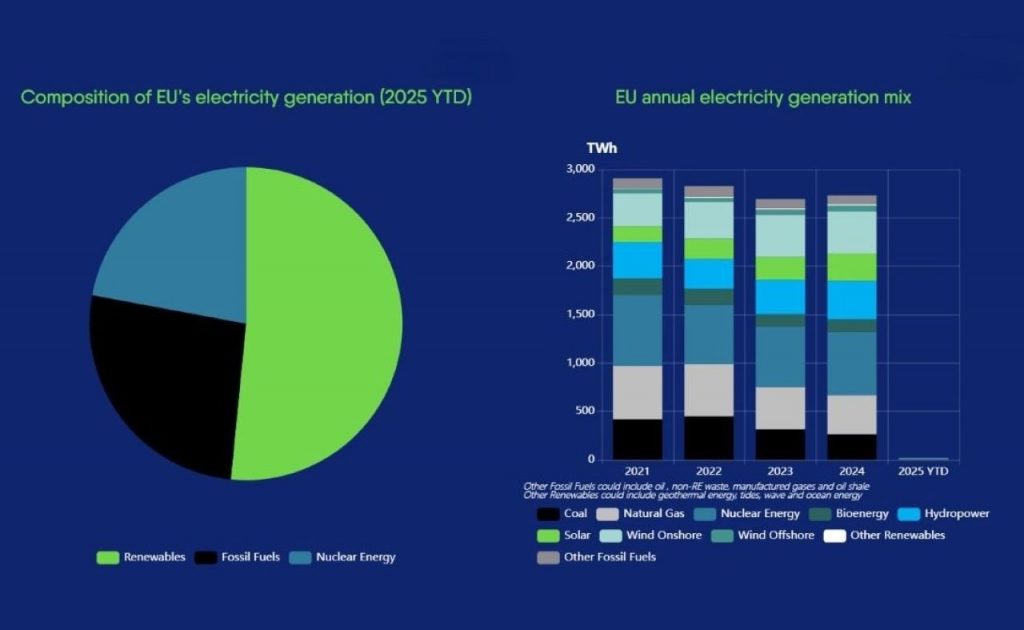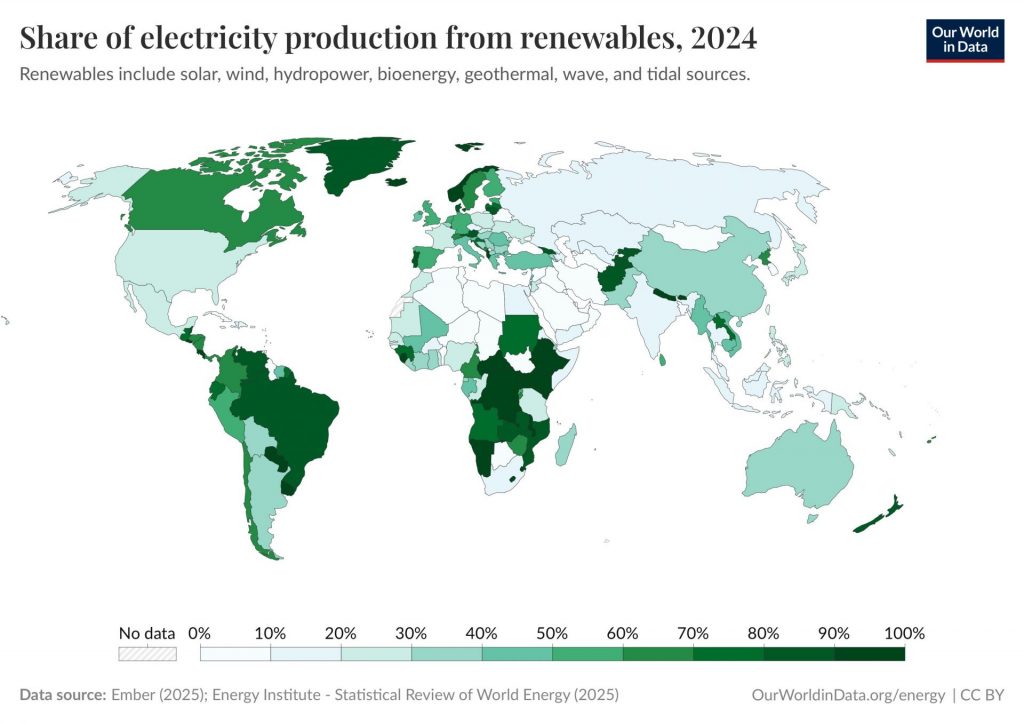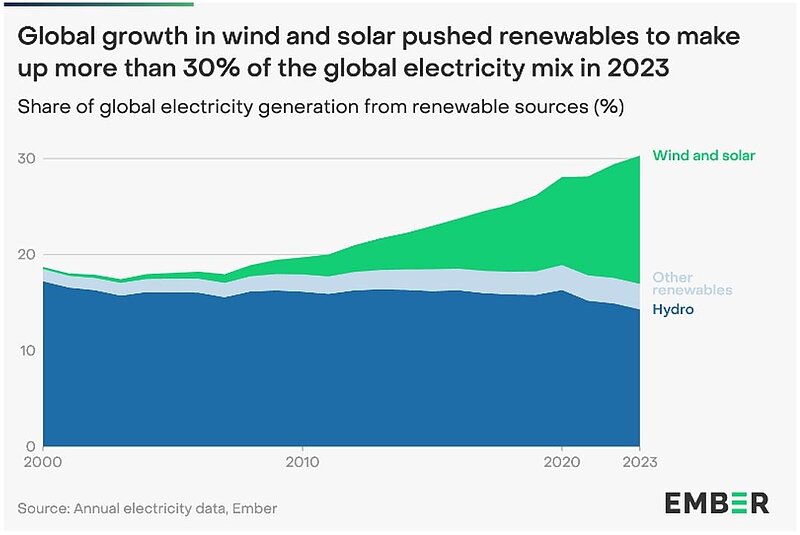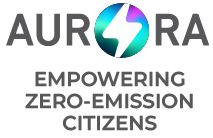- Setting the Scene: A Transition Underway
The global energy system is living through one of the most rapid and profound transformations in modern history.
In 2024, for the first time ever, low-carbon power sources — renewables together with nuclear — supplied over 40% of the world’s electricity. What was once an aspiration of policymakers has now become a measurable reality, propelled by an extraordinary rise in solar and wind capacity[1].
Behind these figures lies a quiet revolution. The cost of renewable technologies has plummeted, governments have embraced long-term climate commitments, and investors are now steering trillions toward clean energy. According to the International Energy Agency (IEA) [2], global investment in energy is set to reach US $3.3 trillion in 2025, with clean technologies attracting twice as much capital as fossil fuels[3].

This turning point signals more than a technological change — it reflects a profound economic and social realignment. Decarbonisation has become a mainstream growth strategy, reshaping industries, jobs, and geopolitical relations. Yet, the transition is far from uniform.
While Europe, North America, and parts of Asia are scaling renewables at record speed, many developing economies remain constrained by limited financing, weak infrastructure, and fragile grids.
The World Economic Forum warns that the so-called “energy triangle” — the balance between sustainability, security, and equity — is still uneven. Progress in sustainability has been impressive, but the pillars of affordability and security continue to lag behind.[4].
This uneven progress underscores a key reality of the 2020s: the energy transition is global in aspiration but local in execution. How nations navigate that gap will define the success or failure of the coming decade.
- Europe’s Transition: Milestones, Momentum and Mismatches
2.1 Milestones and Momentum
If the world is moving toward clean energy, Europe is at the forefront of that transformation.
In just five years, the EU’s electricity mix has changed dramatically. According to Ember’s European Electricity Review 2025 [5], renewables climbed from 34% of generation in 2019 to 47% in 2024, while fossil fuels fell to an all-time low of 29%. It is a historic shift — the continent’s cleanest energy mix on record.
This progress is no coincidence. It reflects years of policy design under the European Green Deal and the Fit for 55 Package, which turned climate ambition into binding legislation.
The International Renewable Energy Agency (IRENA) projects that Europe’s renewable power capacity will triple by 2030[6], quadruple by 2040, and quintuple by mid-century compared to 2021 levels — a massive acceleration that shows the scale of transformation ahead.
At national level, the picture is equally striking. In 2023, renewables supplied 46% of all electricity generated in the EU, ahead of nuclear (29%), solid fuels (17%), and natural gas (5%) — making 2024 the cleanest year in Europe’s energy history[7].

Electricity generation by fuel. Extracted from https://ieu-monitoring.com/editorial/eurelectric-eu-achieved-the-cleanest-power-generation-mix-yet-in-2024/528531?utm_source=ieu-portal
2.2 Drivers Behind the Success
Several factors underpin this momentum:
- Massive cost declines in wind and solar technologies.
- Strong policy frameworks such as the European Green Deal and the Renewable Energy Directive II (RED II) which sets binding renewables targets (e.g., 42.5% of gross final energy consumption by 2030)[8].
- Growing concerns around energy security — especially after recent shocks to global gas supplies — accelerating deployment of domestic renewables.
- Rising citizen and investor demand for clean energy, and corresponding scaling of finance into renewables and storage.
2.3 Persistent Challenges and Emerging Bottlenecks
However, the transition is not without weaknesses.
- In Q1 2025 the EU’s share of renewables in net electricity generation dropped to 42.5% from 46.8% in Q1 2024, due to declines in hydro and wind production, even though solar generation rose[9]
- The end-use sectors — buildings, transport, and industry — are progressing more slowly. A report by Wood Mackenzie suggests that delays in decarbonising these sectors may push EU net-zero beyond 2060[10].
- Investment flows still need to accelerate while generation is ramping, grid infrastructure, storage, demand-side management and sector coupling lag behind. The WEF highlights that energy-security remains the slowest-moving pillar[11].
- Competitiveness concerns: The 2025 “Competitiveness Progress Report” shows that while deployment is record high, Europe faces global competition in clean-tech manufacturing, research and innovation[12].
In sum, Europe has achieved well over half of the electricity transition, but the remaining gap is increasingly in harder areas (end-use, flexibility, infrastructure) and the cost of delay grows the longer one waits.
- Global Momentum and the Road Ahead
The story of the energy transition does not end with Europe — it is part of a global acceleration that is redefining the world’s economy and politics.
In 2024, solar energy alone provided more new electricity than any other source, doubling generation in just three years. According to the IEA’s World Energy Investment 2025[13], clean energy now attracts twice as much investment as fossil fuels worldwide, signalling that the centre of gravity in the energy system has shifted permanently.
Still, progress remains uneven. Emerging economies — especially in Africa, South Asia, and Latin America — hold vast solar and wind potential but struggle with financing, transmission capacity, and institutional stability. The Atlantic Council (2025)[14] notes that without stronger global partnerships and investment frameworks, much of this potential will remain untapped.
Europe’s experience offers both inspiration and caution. Its success in scaling renewables proves that policy ambition, market design, and citizen engagement can transform an entire continent’s energy mix within a decade. But it also reveals new bottlenecks: supply-chain dependence, grid constraints, and rising costs of industrial decarbonisation.
To maintain its leadership, the EU will need to go beyond deployment and focus on integration — connecting clean energy to transport, heating, and industry; expanding storage; and reinforcing cross-border grids.
The International Renewable Energy Agency (IRENA)[15] estimates that to meet its 2030 goals, Europe must nearly double its wind and solar capacity to 1,100 GW, while shifting investment from generation to smart infrastructure.
This transformation will also demand a stronger social dimension. As the European Commission (2025)[16] highlights, a just transition — one that secures jobs, affordability, and fairness — is essential to keep public trust and political stability.
The next decade will decide whether Europe’s progress becomes a global blueprint or a regional exception. The world is moving, fast and unevenly — but the direction is clear.
The age of clean power has begun; the challenge now is to make it universal, reliable, and just[17].
[1] https://ember-energy.org/app/uploads/2025/01/EER_2025_22012025.pdf
[2] https://www.iea.org/reports/world-energy-investment-2025/european-union
[3] https://www.iea.org/news/global-energy-investment-set-to-rise-to-33-trillion-in-2025-amid-economic-uncertainty-and-energy-security-concerns
[4] https://www.weforum.org/stories/2025/06/energy-transition-progress-in-charts/
[5] https://ember-energy.org/latest-insights/european-electricity-review-2025/
[6] https://www.irena.org/Publications/2025/Jun/Regional-energy-transition-outlook-European-Union
[7] https://ec.europa.eu/eurostat/web/interactive-publications/energy-2025?utm_source=chatgpt.com
[8] https://climateobservatory.eu/blog-investing-energy-independence-smart-move-europes-economy
[9] https://ec.europa.eu/eurostat/web/products-eurostat-news/w/ddn-20250619-2
[10] https://www.woodmac.com/market-insights/topics/energy-transition-outlook/eto-eu
[11] https://www.weforum.org/stories/2025/06/energy-transition-progress-in-charts
[12] https://energy.ec.europa.eu/news/2025-competitiveness-progress-report-opportunities-boost-eu-clean-tech-2025-02-26_en
[13] https://www.iea.org/reports/world-energy-investment-2025
[14] Atlantic Council (2025) Financing the Eastern Mediterranean’s Energy Transition: https://www.atlanticcouncil.org
[15] IRENA (2025) EU Regional Energy Transition Outlook: https://www.irena.org/Publications/2025/Jun/Regional-energy-transition-outlook-European-Union
[16] European Commission (2025) Just Energy Transition Initiatives: https://energy.ec.europa.eu/news/focus-eu-initiatives-just-energy-transition-2025-05-14_en
[17] World Economic Forum (2025) Energy Transition Progress in Charts: https://www.weforum.org/stories/2025/06/energy-transition-progress-in-charts






